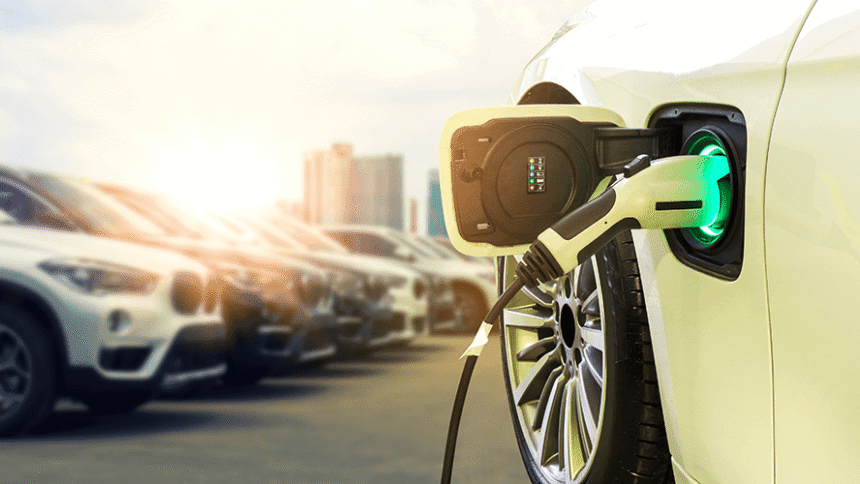The electric vehicle (EV) revolution is no longer a distant concept—it’s happening now. As more drivers make the switch to electric cars, the demand for accessible, fast, and reliable charging solutions continues to surge. While public charging infrastructure is growing steadily, having a home-based charging station is quickly becoming a priority for EV owners who value convenience, control, and efficiency.
Installing an EV charger at home or a commercial property is a practical investment in a cleaner, more sustainable future. However, it involves more than just plugging in a device. Understanding the technical requirements, safety considerations, equipment options, and installation process is critical to making the right decision. This article offers a detailed look at everything you need to know about EV charger installation—from choosing the right charger to ensuring long-term performance and safety.
Why Install an EV Charger?
1. Convenience at Home or Work
With a dedicated EV charger, you eliminate the need for frequent trips to public charging stations. Simply plug in your car at night or during work hours and start your day with a full battery. Home charging provides a level of convenience and autonomy that public infrastructure simply can’t match.
2. Cost Efficiency
Charging at home is often significantly cheaper than using public chargers. By installing a charger, you can take advantage of off-peak electricity rates, solar energy integration, or smart charging programs that optimize energy use and reduce utility bills.
3. Faster Charging
Compared to a standard wall outlet, a dedicated Level 2 charger can cut charging time dramatically. Depending on your EV and charger model, you can fully charge your battery in just a few hours.
4. Future-Proofing Your Property
As EVs become the norm, properties with EV charging capabilities will stand out in the real estate market. It adds long-term value, especially in urban and multi-family housing developments.
Understanding Charger Levels and Types
Not all EV chargers are the same. Choosing the right level of charger is essential for meeting your specific needs and expectations.
Level 1 Charging
- Voltage: 120V
- Charging speed: 3–5 miles per hour
- Installation: Uses a standard home outlet
Level 1 is the slowest but simplest method of charging. It’s typically used as a backup solution or by users with very low daily mileage.
Level 2 Charging
- Voltage: 240V
- Charging speed: 10–60 miles per hour
- Installation: Requires a dedicated circuit
Level 2 chargers are the most popular for home and commercial installations. They provide a great balance between speed, cost, and availability.
Level 3 Charging (DC Fast Charging)
- Voltage: 400V to 900V+
- Charging speed: 60–100+ miles in 20 minutes
- Installation: Commercial-grade infrastructure
This high-speed charging is usually reserved for public stations and commercial fleets due to its high cost and electrical requirements.
Key Considerations Before Installation
Before beginning an EV charger installation, several important factors must be evaluated to ensure safety, efficiency, and compatibility.
1. Electrical Panel Capacity
Installing a Level 2 charger typically requires a 240V circuit rated for 30 to 50 amps. Your existing electrical panel must be assessed to determine if it has enough capacity. If not, an upgrade may be necessary, adding to the overall cost.
2. Charging Location
Decide where the charger will be installed—garage wall, driveway post, or a dedicated parking spot. Factors like proximity to the electrical panel, cable reach, and protection from weather conditions will influence your choice.
3. Cable Length and Management
Choose a cable length that suits your parking setup. Many EV chargers come with 18 to 25-foot cords. Consider installing a cable management system to keep cords tidy and reduce wear.
4. Wi-Fi and Smart Features
Many modern chargers include smart features like app controls, usage tracking, scheduled charging, and load balancing. If these are important to you, select a charger model with these capabilities and ensure Wi-Fi connectivity at the installation site.
The Installation Process: What to Expect
A proper EV charger installation follows a step-by-step process to ensure functionality, safety, and code compliance. Here’s how it typically works:
Step 1: Site Assessment
A qualified electrician or installer begins with a full inspection of your property and electrical system. This includes evaluating panel capacity, grounding, circuit requirements, and layout planning for charger placement.
Step 2: Permits and Code Compliance
In many areas, permits are required for electrical work. A licensed installer will manage this process and ensure the project complies with national and local electrical codes, including NEC guidelines and safety standards.
Step 3: Hardware Installation
Once approved, the electrician installs a dedicated 240V circuit and mounts the charging station. This may include drilling, conduit placement, and integration with your main panel.
Step 4: System Testing
Before the charger is activated, the system undergoes testing for voltage levels, grounding integrity, and circuit protection. The installer ensures that all settings, such as amperage limits and Wi-Fi connectivity, are configured correctly.
Step 5: Walkthrough and User Training
Finally, the installer provides a brief overview of how to use the charger, schedule charging times, monitor usage, and troubleshoot basic issues.
Maintenance and Safety Tips
EV chargers are built for durability, but like any electrical appliance, regular care is essential to maintain safety and performance.
Regular Inspections
Check cables and connectors periodically for signs of wear or damage. Ensure that the charger is securely mounted and that no moisture or debris accumulates around the unit.
Software Updates
For smart chargers, keep the firmware updated to benefit from performance improvements, bug fixes, and new features. Many chargers update automatically via Wi-Fi.
Surge Protection
Protect your investment by installing a whole-house surge protector or integrated breaker systems to shield the charger from electrical surges or lightning strikes.
Winter and Wet Weather Care
Outdoor chargers should be rated for weather resistance (NEMA 3R or higher). Still, it’s wise to keep connections dry and remove snow or ice from cables to prevent stress and cracking.
Commercial and Multi-Unit EV Charger Installation
As electric vehicles become common, commercial properties, office buildings, and multi-unit residential complexes are increasingly adding charging infrastructure.
Benefits for Businesses and Property Managers
- Attract EV-driving customers and tenants
- Enhance sustainability efforts
- Qualify for tax incentives or green certifications
- Improve employee satisfaction
Installation Considerations
For commercial settings, scalability, load management, and user access control are top priorities. Networked chargers that track usage, set pricing, and allocate power dynamically can make large-scale installations manageable and cost-effective.
Incentives and Rebates
Depending on your region, numerous rebates, tax credits, and incentive programs can offset the cost of EV charger installation. These may be offered by:
- Utility companies
- Federal and state governments
- Environmental agencies or nonprofit programs
Typical savings include discounts on hardware, installation subsidies, or ongoing energy rebates for smart charging practices.
Common Myths About EV Charger Installation
Myth 1: Any Electrician Can Do It
While technically true, it’s essential to work with a certified electrician experienced in EV infrastructure. Mistakes can lead to unsafe wiring, inefficiencies, or voided warranties.
Myth 2: It’s Too Expensive
With incentives and growing competition among charger manufacturers, prices have dropped significantly. Over time, the savings in fuel and maintenance outweigh initial installation costs.
Myth 3: Public Chargers Are Enough
Public charging stations are helpful, but not always available or convenient. Home charging offers unparalleled convenience and peace of mind, especially for daily commuting.
Looking Ahead: The Future of EV Charging
As EV adoption accelerates, the role of home and commercial chargers will continue to evolve. Wireless charging, solar integration, bi-directional charging (vehicle-to-grid), and AI-powered energy management are on the horizon.
By planning your EV charger installation thoughtfully today, you’re not only enhancing your current driving experience but also preparing for tomorrow’s innovations.
Conclusion
An EV charger installation is more than a convenience—it’s a smart investment in sustainability, property value, and daily efficiency. As electric vehicles become increasingly mainstream, having a reliable, efficient charging solution at home or work will be as essential as having access to the internet or clean water.
With the right knowledge, equipment, and professional support, setting up your EV charger can be a smooth and rewarding process. Whether you’re a new EV owner or upgrading your current setup, now is the perfect time to take charge of your future—literally and sustainably.
For More Information, Visit Dotmagazine









